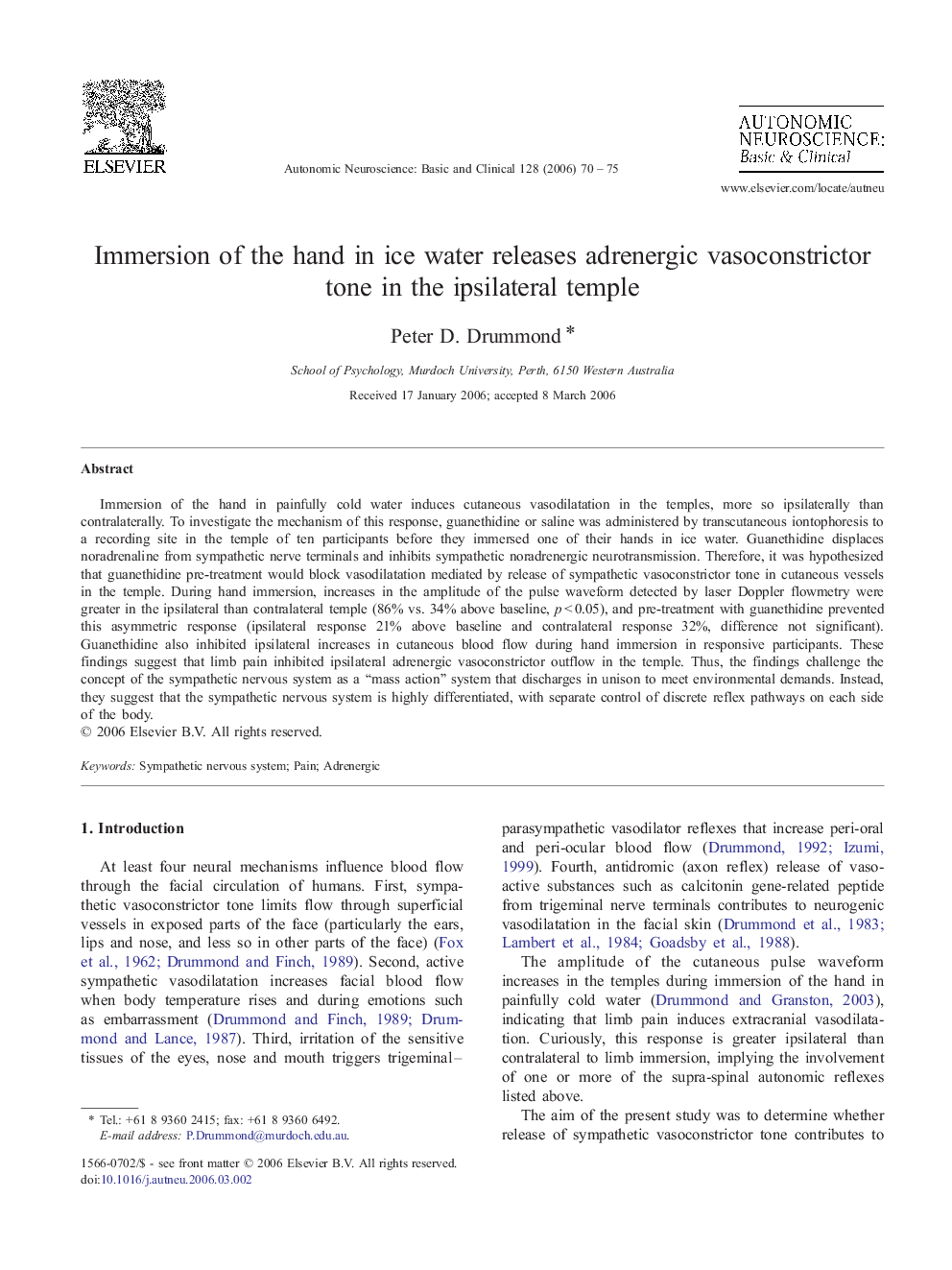| Article ID | Journal | Published Year | Pages | File Type |
|---|---|---|---|---|
| 3035938 | Autonomic Neuroscience | 2006 | 6 Pages |
Immersion of the hand in painfully cold water induces cutaneous vasodilatation in the temples, more so ipsilaterally than contralaterally. To investigate the mechanism of this response, guanethidine or saline was administered by transcutaneous iontophoresis to a recording site in the temple of ten participants before they immersed one of their hands in ice water. Guanethidine displaces noradrenaline from sympathetic nerve terminals and inhibits sympathetic noradrenergic neurotransmission. Therefore, it was hypothesized that guanethidine pre-treatment would block vasodilatation mediated by release of sympathetic vasoconstrictor tone in cutaneous vessels in the temple. During hand immersion, increases in the amplitude of the pulse waveform detected by laser Doppler flowmetry were greater in the ipsilateral than contralateral temple (86% vs. 34% above baseline, p < 0.05), and pre-treatment with guanethidine prevented this asymmetric response (ipsilateral response 21% above baseline and contralateral response 32%, difference not significant). Guanethidine also inhibited ipsilateral increases in cutaneous blood flow during hand immersion in responsive participants. These findings suggest that limb pain inhibited ipsilateral adrenergic vasoconstrictor outflow in the temple. Thus, the findings challenge the concept of the sympathetic nervous system as a “mass action” system that discharges in unison to meet environmental demands. Instead, they suggest that the sympathetic nervous system is highly differentiated, with separate control of discrete reflex pathways on each side of the body.
